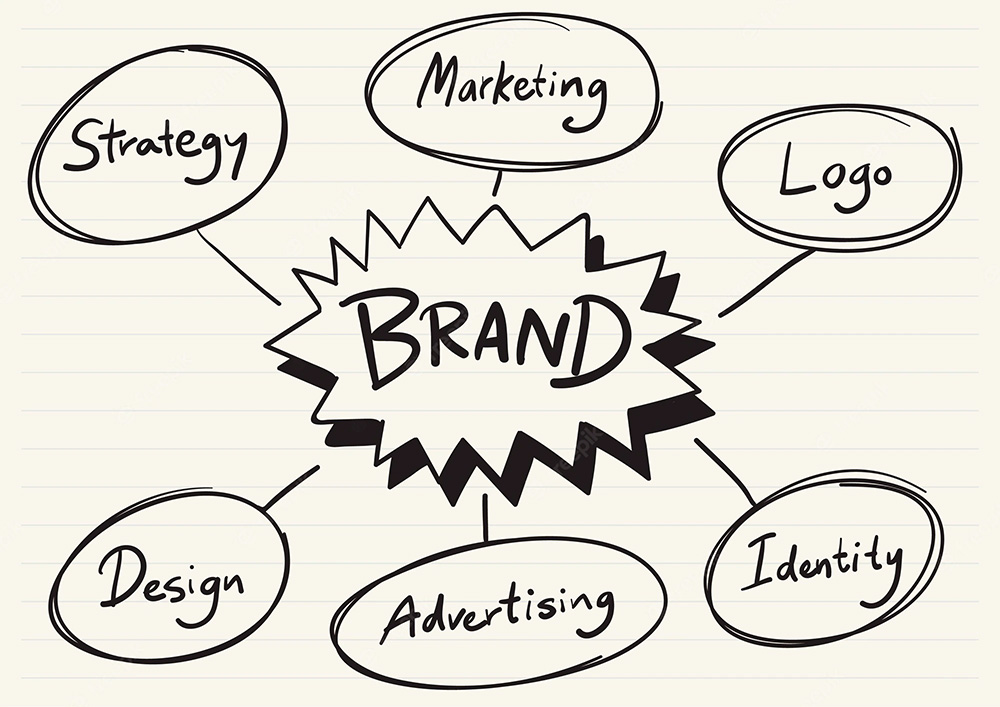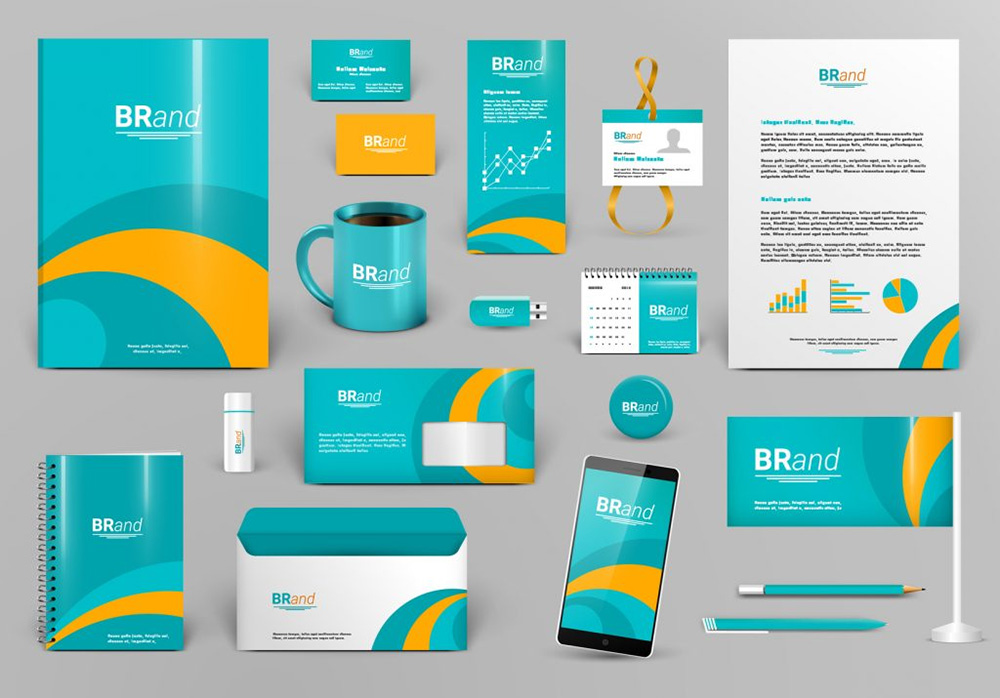
Launching Soon
Join our VIP list to receive early access and a LIFE-TIME discount on your Graphic
Design subscription.



Image: Freepik
Before we dive in, let’s set the record straight. There are many assumptions about what branding is. Oftentimes, it’s used interchangeably with logo design, typography and identity design – so let’s be clear on what branding is.
First, let's look at what branding isn’t.
So, what is a brand exactly?
“A brand is a result - it’s a person’s gut feeling about a product, service or company. It’s in their heads and in their hearts. A brand is your reputation”
– Marty Neumeier, author of The Brand Gap.
So, how does design fit into branding? Graphic design legend Paul Rand said it best: “Design is the silent ambassador of your brand”.
A consistent brand identity can be a powerful tool to establish your business’ credibility and help you stand out from your competitors. Your brand identity includes a website, print collaterals, and any other visuals related to your business. Establishing a cohesive look across all these platforms will allow your customers to easily identify your brand.
But where to begin? In this article, we tap into the industry insights of Brandripe’s professional creators to share the four steps process of creating a magnetic brand.
 The Apple brand, for example, is perceived to be luxurious and aspirational. Image: Pexels
The Apple brand, for example, is perceived to be luxurious and aspirational. Image: Pexels
As aptly put by brand, design, innovation and creativity speaker and author Marty Neumeier, a brand is none other than a result of a person’s gut feeling about a product, service or company. To create a perception, it’s important to take the steps to first understand what the existing perception of your brand is from the perspective of your customers, employees and stakeholders.
Be specific in your enquiry to identify the following:
There are at least three methods to uncover your brand perception. We will also reveal the pros and cons of each method so you can make an informed decision.
Using a questionnaire is a method that is often used by business owners or brand managers. This tried-and-tested method is often preferred, especially if you are just looking for a place to start your brand perception enquiries.
Pros of using a questionnaire:
Cons of using a questionnaire:
Get up and personal with your audience through a Zoom call. This is a method of applying the questions you would ask in a questionnaire on a call.
Pros of using a Zoom Call:
Cons of using a Zoom call:
When in doubt, why not combine the best of both worlds? It will take some time to get the ball rolling but that is where planning a good strategy comes into play. You can keep the questionnaires short and focused while providing comprehensive guidance so you have something to expand on for your Zoom call.
 Lifestyle brands are typically lively and colourful, while B2B brands tend to use colours that make them seem reliable. Image: Pexels
Lifestyle brands are typically lively and colourful, while B2B brands tend to use colours that make them seem reliable. Image: Pexels
So why ask all these questions to your customers, employees and stakeholders? It’s to design and align who you are and the perception of your target audiences.
From there, you can start to identify your mission and vision. Figure out how your brand’s vision can fit into the lives of the people who use your products or service.
You can start to create a brand persona that you can communicate clearly through design, communication, tone and language. Casual lifestyle brands can embody a persona that their customers might want to be friends with, while B2B brands will relate better to a professional personality that is perceived as knowledgeable and trustworthy.
When you are ready with a brand persona, you can start to build your brand’s narrative. This is where you figure out how you tell people what you do and why you do it.
 McDonald’s is easily one of the most recognisable brands in the world thanks to its yellow and red packaging. Image: Pexels
McDonald’s is easily one of the most recognisable brands in the world thanks to its yellow and red packaging. Image: Pexels
When you think of Starbucks, McDonald’s and Apple, the first few things that may pop up in your mind are their distinctive colour palettes, logo and other visual elements. Of course, most of all are the result of using their respective products or services. The visual element is giving those experiences a physical form so your customers can better recollect their experiences and align with what you want your customer to stand for.
Based on what you have determined from (1) and (2), you can start with creating a vision board. We talked about it before in this article. In the vision board you can decide on the following:
 Staying consistent is one of the most important facets of branding.
Staying consistent is one of the most important facets of branding.
Image: Agency 254
Once you’ve decided on the visual elements for your brand, the next key step is staying consistent. This is where having a brand guideline will play a crucial role. A brand guideline helps inform everyone in your organisation and stakeholders about the look and feel of your brand. This would allow your brand to stay consistent across a variety of platforms.
A consistent brand gives your customers a sense of stability and security that they can rely on you when they need you. If you change how you look too often, people would start to disconnect and this will create a sense of distrust which will be hard (if not impossible) to regain.
 To quote Marty Neumeier once again, “A brand is a result - it’s a person’s gut feeling about a product, service or company. It’s in their heads and in their hearts. A brand is your reputation”.
To quote Marty Neumeier once again, “A brand is a result - it’s a person’s gut feeling about a product, service or company. It’s in their heads and in their hearts. A brand is your reputation”.
So it would only make sense that while you wear the many hats that are required to protect the reputation of your business, especially creating a great customer experience, you should leave your design needs to Brandripe.
Let us use our years of expertise to design visuals that will be the silent ambassadors of your brand. Here are other reasons why this one-step is the best business decision for your branding needs:
Want to find out more and start building the best brand ever? Schedule a 15-minute VIP Demo Call with us to get a peek into how we can make your branding needs come to life!

